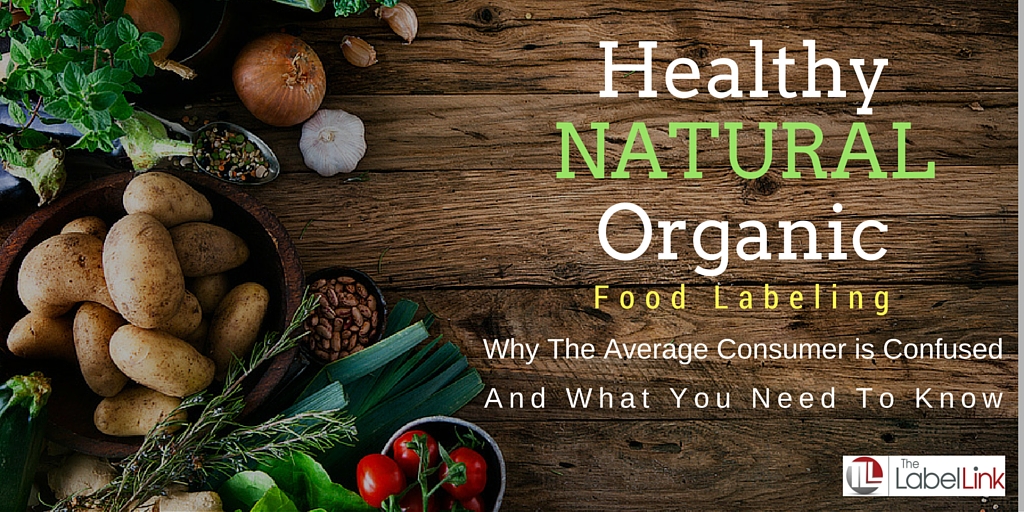
The Confusion Behind Natural Food Labeling
You might already be tuned into your nutrition facts label, but how about the rest of your food labeling?
Think the verbiage you use on your food and beverage labels doesn’t matter much? Think again. There’s a lot of confusion, misunderstanding and overall concern for the way foods and drinks are labeled today – especially when it comes to the terms “natural,” “organic,” and “healthy.”
Is It Natural, Organic or Both?
Did you know, the United States Food and Drug Administration (FDA) has yet to set any specific rules about what ‘natural’ means?
One of the ways the FDA considered defining ‘natural’ for human food labeling was the following: “Nothing artificial or synthetic (including all color additives regardless of source).” The problem with this definition was, it didn’t include any elements of the manufacturing process. For example, if pesticides were used in growing any fruits or vegetables for a product, would the food still be considered natural? Or is that only organic?
Organic foods refer to both the food ingredients themselves and how these ingredients are produced. There are regulations about labeling a food “organic.” If a manufacturer wants to add the term “organic” to their food labeling, it must be certified by the National Organic Program, which began in 2002.
But here’s the problem. Many times, consumers use the terms “natural” and “organic” interchangeably, assuming a product labeled as natural means it’s a pesticide and hormone free. It doesn’t, and that has created quite a controversy between the FDA, consumers, and food manufacturers.
The Confusion Behind “Natural” Food Labeling
Without a doubt, consumers are confused.This confusion was confirmed in a 2014 survey by Consumer Reports. In the survey, 1,005 adults were asked if they seek out products with the term “natural” on the label. Over half said yes.
The FDA might not have any rules about how products claiming to be natural are marketed, but that doesn’t mean it’s not on their radar. After receiving three Citizen Petitions asking the FDA to define the term “natural” on food labels and one Citizen Petition asking that the word “natural” be prohibited, the FDA is taking these claims seriously. And this isn’t the only term that has people confused.
What About the Term “Healthy” on Food Labels?
Perhaps even more vague than the terms “natural” or “organic” is the term “healthy.” What deems a product healthy? And who decides on that?
Up until last month, the FDA regulated the term using the following criteria.
Photo Credit: ABC News
In general, a product had to be low fat and have a low sodium content. So when KIND (a nutrition bar manufacturer) started labeling their bars as “healthy,” the FDA took issue. These bars had higher fat levels than what was allowed. But KIND disagreed with the FDA’s definition and fought back saying, “We’re all about whole ingredients, about what people are putting into their bodies — as opposed to fat levels and sodium levels,” Justin Marvis, general counsel for KIND bars said.
Once again, the definition of a particular term to define a product was subjective.
After fighting the FDA, KIND bars eventually won the battle and as of last month, (May 2016), they are allowed to call their bars healthy again.
Question: What are your thoughts on the terms “natural,” “organic,” and “healthy” on food labeling?
Although these are great marketing buzzwords, they are heavy with implication. The problem is, aside from “organic” the term is left up to interpretation by the consumer. If the consumer’s interpretation differs from the manufacturer (and it often times does), it could damage the reputation of the brand.
